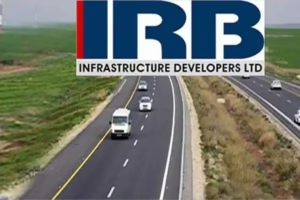Posted on April 1, 2025, by Niftynews
The beginning of the new Financial Year 2025-26 introduces a slew of tax reforms that will impact millions of taxpayers. The government has made several significant changes, including new income tax slabs, zero tax on income up to Rs 12 lakh, and revisions to TDS thresholds. These reforms aim to simplify tax processes and provide relief to middle-class and salaried taxpayers.
1. New Income Tax Slabs for FY 2025-26
Under the revised tax regime for FY 2025-26, the government has introduced new income tax slabs designed to reduce the burden on low to middle-income earners. Here’s a detailed breakdown of the new tax slabs:
| Income Range (₹) | Tax Rate (%) |
|---|---|
| 0 – 4,00,000 | 0% |
| 4,00,001 – 8,00,000 | 5% |
| 8,00,001 – 12,00,000 | 10% |
| 12,00,001 – 16,00,000 | 15% |
| 16,00,001 – 20,00,000 | 20% |
| 20,00,001 – 24,00,000 | 25% |
| 24,00,001 and above | 30% |
2. Zero Tax on Income Up to Rs 12 Lakh
For taxpayers opting for the new tax regime, there will be zero tax on incomes up to Rs 12 lakh. This benefit is made possible through a tax rebate under Section 87A. It is important to note that taxpayers must still file their income tax return (ITR) to claim the rebate.
3. Tweak in ULIPs Taxation
The taxation on Unit Linked Insurance Plans (ULIPs) has been updated. If the annual premium of a ULIP exceeds Rs 2.5 lakh, the proceeds will now be taxed as capital gains. Short-term capital gains will be taxed at 20%, while long-term gains will attract a 12.5% tax without the benefit of indexation.
4. Rationalization of TDS Rates and Thresholds
Starting April 1, 2025, the TDS (Tax Deducted at Source) thresholds have been revised upwards across multiple sections. Some notable changes include:
| Section | Current Threshold | New Threshold |
|---|---|---|
| 193 – Interest on Securities | Nil | ₹10,000 |
| 194A – Interest on Banks | ₹40,000 (general) | ₹50,000 (general), ₹1,00,000 (senior citizens) |
| 194D – Insurance Commission | ₹15,000 | ₹20,000 |
These changes aim to simplify compliance and reduce TDS deductions for taxpayers.
5. Removal of Higher TDS/TCS for Non-Filers of ITR
The government has removed the higher TDS and TCS rates that were previously applicable to non-filers of Income Tax Returns (ITR). From April 1, 2025, higher rates will no longer be applied to non-filers, reducing the compliance burden on taxpayers.
6. Deduction under Section 80CCD for NPS Vatsalya Contributions
The NPS Vatsalya scheme now qualifies for deductions under Section 80CCD for those opting for the old tax regime. This will allow taxpayers to enjoy tax benefits on their contributions to the NPS Vatsalya fund.
7. Increased Limits for Medical Perquisites
Medical perquisites provided by employers to employees or their families are now eligible for a higher tax-free limit. The change, effective from April 1, 2025, applies to medical treatment abroad covered under employer-paid schemes.
8. Simplified Calculation for Self-Occupied Property
The calculation for annual value of self-occupied properties has been simplified. Taxpayers will now be able to claim the value of two self-occupied houses as zero for income tax purposes.
9. Exemption from Prosecution for Delayed TCS Payments
The new law provides an exemption from prosecution for delayed TCS payments, provided the payments are made to the credit of the government on time. This aims to reduce penalties and streamline compliance.
10. Extended Deadline for Filing Updated Returns
The deadline to file an updated return has been extended to 48 months from the end of the assessment year, up from the previous 24-month limit. This change allows taxpayers more time to file their returns and correct any discrepancies.
11. Comparison of Current and Past ITRs
The Income Tax Department will now have the authority to compare current ITRs with previous year filings to check for irregularities. This new feature will help ensure greater accuracy and transparency in tax filing.
Conclusion
The new income tax slabs and other changes set to take effect from April 1, 2025, aim to simplify the tax filing process and provide more relief to taxpayers, especially those with lower and middle incomes. It’s essential to review your financial strategy and tax planning to ensure you benefit from these reforms.
For detailed information on the income tax slabs, TDS rationalization, and other tax reforms, stay tuned for more updates.











